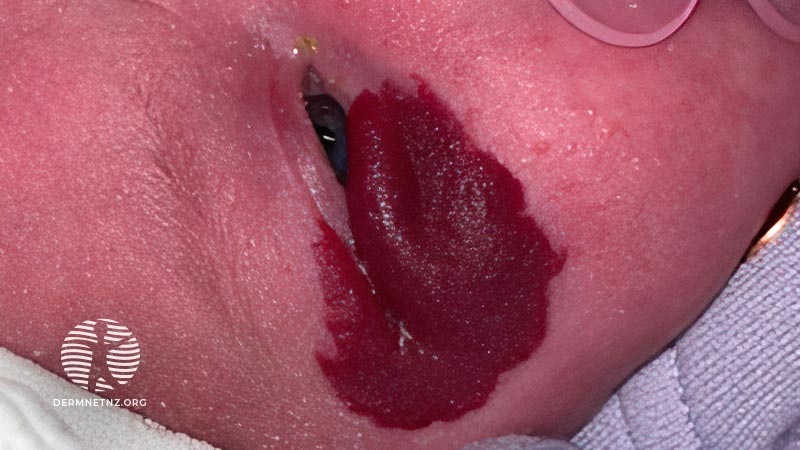Main menu
Common skin conditions

NEWS
Join DermNet PRO
Read more
Quick links
Progressive red patch near the eye in an infant
Last reviewed: August 2023
Author: Dr Jemima Sellicks, Junior Doctor (2023). Reviewing dermatologist: Dr Ian Coulson (2023)
Edited by the DermNet content department

Background
An otherwise healthy 3-week-old girl presented to the children’s assessment unit with a rapidly progressing red patch on the left lateral periorbital region.
What is it?
Infantile haemangioma of the periorbital region, caused by the rapid growth of capillary blood vessels on the surface of the skin. Infantile haemangiomas characteristically develop in the first few weeks of life, up to three months of age.
What investigations are required?
In view of its rapid progression and proximity to the eye, this patient underwent an MRI of the brain to exclude any extension in the orbit or brain. If the haemangioma is not in a ‘high risk’ area, patients may not need further investigation or treatment.
What treatment is indicated?
Infantile haemangiomas can be managed by observation only, as most will undergo spontaneous resolution by the age of 6, but may be treated with an oral beta-blocker. This causes resolution of the lesion by contracting the blood vessels and decreasing blood flow to the area.
Treatment duration is dependent on the response, but can continue for up to 18 months. The indications for beta blockade include obliteration of the visual axis by the haemangioma, severe organ dysfunction as a result of the haemangioma, bleeding (often in the napkin area due to trauma) and cosmetic concerns. Some thin lesions may be amenable to the topical beta blocker timolol.
